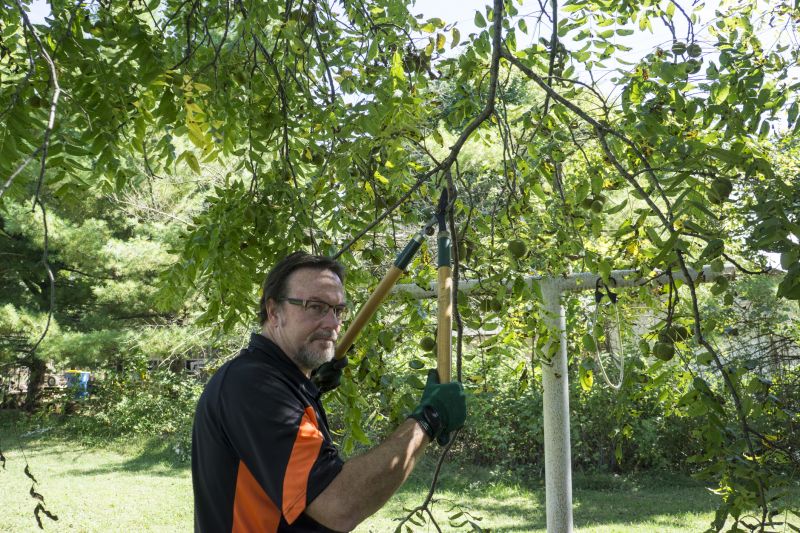Top Products For Tree Trimming Tasks That Ensure Safety And Precision
Explore the leading tools designed to make tree trimming safer, easier, and more efficient for both professionals and homeowners.
 Tree trimmings are an essential part of maintaining healthy and attractive trees, whether for decorative purposes or safety concerns. Proper trimming helps promote new growth, remove dead or diseased branches, and shape the tree for aesthetic appeal. When selecting products for tree trimmings, it is important to consider tools and accessories that facilitate efficient, safe, and precise trimming. From basic pruning shears to specialized equipment, there are numerous options designed to meet different needs and tree types.
Tree trimmings are an essential part of maintaining healthy and attractive trees, whether for decorative purposes or safety concerns. Proper trimming helps promote new growth, remove dead or diseased branches, and shape the tree for aesthetic appeal. When selecting products for tree trimmings, it is important to consider tools and accessories that facilitate efficient, safe, and precise trimming. From basic pruning shears to specialized equipment, there are numerous options designed to meet different needs and tree types.
Top Overall Option
Multi-Function Tree Trimming Kit
A comprehensive tree trimming kit typically includes a variety of hand tools such as pruning shears, loppers, and a small saw, all designed with ergonomic handles and durable blades. These kits are suitable for a range of trimming tasks, from light pruning to more substantial branch removal. They often come with protective gloves and carrying cases for convenience, making them ideal for homeowners and hobbyists seeking a versatile solution for tree maintenance.
Types of Products For Tree Trimmings
Pruning Shears
Hand-held tools designed for precise cuts on small branches and stems, ideal for detailed trimming work.
Lopping Shears
Long-handled cutting tools suitable for trimming medium to large branches with increased leverage.
Pole Pruners
Extendable tools that allow trimming of high branches without the need for ladders.
Chainsaws
Power tools used for cutting thicker branches and limbs, suitable for larger tree maintenance tasks.
Hand Saws
Manual saws designed for more controlled cuts on branches that are difficult to reach.
Tree Climbing Gear
Harnesses, ropes, and spikes that enable safe climbing for trimming high or hard-to-reach branches.
Debarking Tools
Tools used to remove bark from trimmed branches for disposal or processing.
Disposal Bags and Baskets
Containers designed to collect and transport trimmed branches and leaves efficiently.
Tree Branch Chippers
Machines that turn branches into mulch, facilitating easier disposal or composting.
Safety Gear
Gloves, goggles, helmets, and harnesses to protect users during trimming activities.
Extension Poles
Accessories that extend the reach of manual tools for high branches.
Tree Guards and Wraps
Protective coverings to prevent damage to the trunk during trimming or other maintenance.
Pruning Saw Blades
Replacement blades for pruning saws, ensuring continued sharpness and effectiveness.
Grafting Tools
Specialized tools for pruning and grafting, often used in orchard or specialty tree care.
Tree Trimming Kits
All-in-one sets that include various tools and accessories tailored for comprehensive trimming tasks.
Aerial Lift Platforms
Equipment that provides safe elevated access for large-scale or commercial tree trimming.
Popular Choices
Lightweight and easy to handle for daily trimming needs around the yard.
Robust tools designed for thicker branches, providing increased cutting power.
Versatile tools that help reach high branches with minimal effort.
Battery-powered chainsaws that offer mobility and ease of use for larger limbs.
Reliable tools for precise cuts on branches that are within reach.
Safety gear essential for high trimming tasks on tall trees.
Useful for turning trimmings into mulch, simplifying disposal.
Essential safety equipment to prevent injuries during trimming.
Convenient containers for collecting trimmed branches and leaves.
Tools used in specialized pruning and grafting procedures.
Combine reach and cutting capacity for high branches.
Sharp blades for replacement on pruning saws, maintaining cutting efficiency.
Protect the head during high or risky trimming activities.
Protective coverings to shield trunks during trimming and other maintenance.
Cordless solutions for reaching high branches with minimal effort.
Sets that include multiple tools tailored for comprehensive tree care.
Tools for cleaning and removing debris from trimmed branches.
Investing in quality tools can make trimming tasks easier and more effective. Hand-held pruners and loppers are suitable for smaller branches, offering control and ease of use. For larger branches, pole saws and chainsaws provide the reach and power needed to handle more substantial cuts. Additionally, safety gear such as gloves, eye protection, and harnesses are vital for ensuring safety during trimming activities. Proper disposal or recycling of trimmings is also an important aspect, with many products designed to aid in chipping or composting waste.
Whether you are a homeowner maintaining a few trees or a professional arborist managing multiple landscapes, selecting the right products for tree trimmings depends on the specific requirements of your trees and the scope of your work. Durability, ergonomic design, and ease of maintenance are key factors that influence the overall effectiveness of your tools. With the right equipment, tree trimming can be performed more efficiently, reducing effort and increasing safety while helping your trees stay healthy and visually appealing.
Key Buying Considerations
- Type of tree and branch size to determine appropriate tools.
- Frequency of trimming activities to select durable and efficient equipment.
- Safety features and protective gear to ensure safe operation.
- Ergonomic design for comfort during extended use.
- Ease of maintenance and blade replacement options.
- Reach capabilities for high or hard-to-access branches.
- Power source preferences such as manual, electric, or gas-powered tools.
- Weight of tools for ease of handling and reducing fatigue.
- Disposal options for trimmings, including chippers or bags.
- Budget constraints balanced with quality and durability.
- Compatibility of replacement parts and accessories.
- Storage solutions for organized tool management.
- Environmental conditions where tools will be used, such as weather resistance.
- User skill level, choosing tools suitable for beginners or experienced users.
- Availability of warranty or customer support services.
